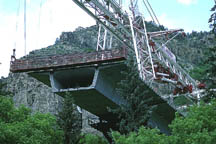STRUCTURAL ENGINEERING
Kavanagh Lecture - Abstract
April 1, 2004
Stability
Lessons from Experiments and Structural Failures
by
Dr. Joseph A. Yura
Cockrell Family Regents Chair in Engineering
University of Texas at Austin
ABSTRACT
Stability problems have a reputation of being difficult to solve and to even understand. A theoretical evaluation
of stability requires a second order structural analysis, i.e. equilibrium
is established for the deflected position of the structure, not a typical
first order analysis. Since most undergraduate and graduate structural
courses focus on the use of first order analysis, many practitioners
have had little structural training in stability issues. Usually, formulas
in design specifications for column, beam and plate buckling and for
bracing requirements provide the only means of checking stability.
The simplicity and format (stress rather than load, for example) of
these formulas can mask important assumptions and approximations used
in their derivations. With these circumstances, experiments and simple
models can be used to convey stability principles in an effective manner.
A variety of structural models will be described that illustrate the following stability principles:
- loss of stiffness as the buckling load is approached
- inelastic column buckling
- importance of end connection details in built-up columns
- stiffness and strength required for braces
- lean-on bracing systems
- torsional buckling

